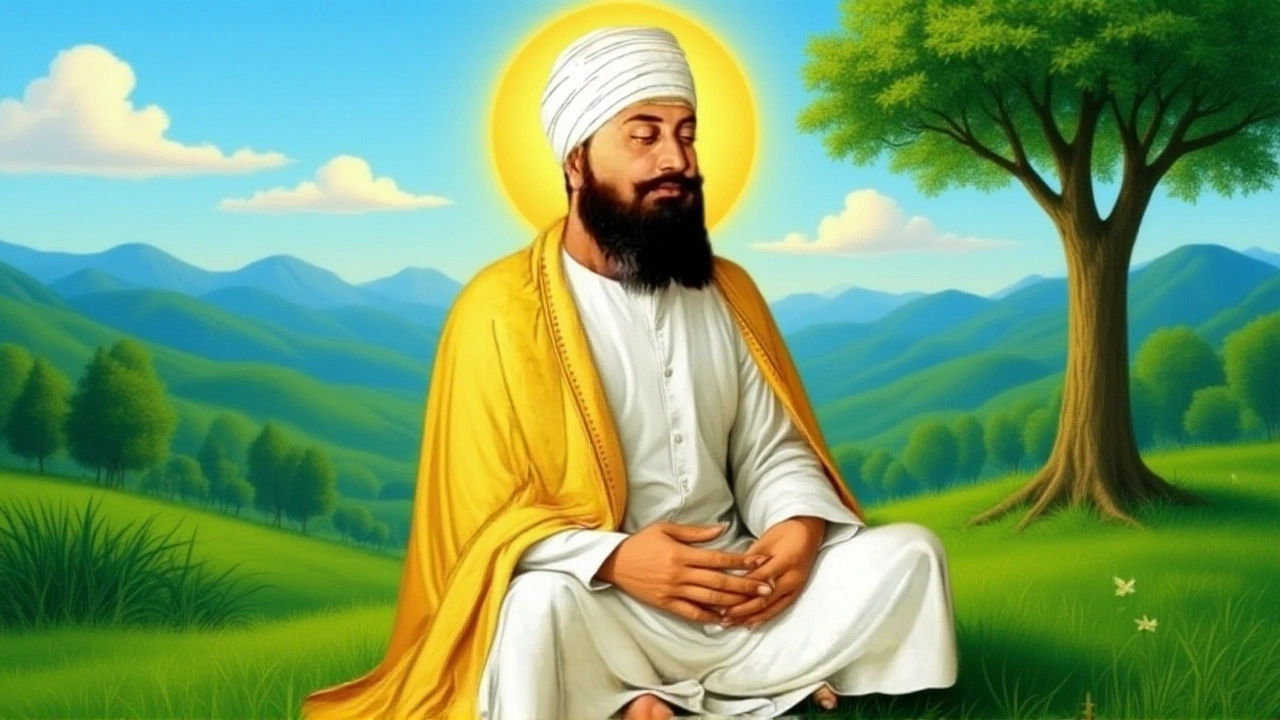On November 24, 1675, in the heart of Delhi’s bustling Chandni Chowk, a quiet but seismic act of resistance ended in blood. Guru Tegh Bahadur, the ninth Sikh Guru, was publicly beheaded on the orders of Aurangzeb, the Mughal emperor whose reign had become synonymous with religious coercion. He didn’t die for land, power, or rebellion—he died because he refused to convert to Islam. And he died defending others: the Kashmiri Pandits, whose temples were being razed and whose faith was being crushed under the weight of the jizya tax. To this day, he is remembered as Hind di Chadar—the Shield of India.
The Silence Before the Storm
By the 1670s, Aurangzeb’s empire stretched from the Hindu Kush to the Deccan, but its soul was fracturing. In Mathura, Varanasi, Gujarat, and Bengal, temples were demolished. Hindu priests were fined, harassed, or worse. The jizya—a tax on non-Muslims—was reinstated in 1679, but the terror had begun years earlier. Kashmiri Pandits, fearing forced conversion, sent a delegation to Anandpur Sahib, where Guru Tegh Bahadur lived in quiet austerity. Their question was desperate: Who will stand for us? The answer came without hesitation.
A Meeting With the Emperor
Guru Tegh Bahadur traveled to Delhi alone, unarmed, dressed simply. He didn’t come to fight. He came to speak truth to power. Aurangzeb offered him wealth, land, even a high court position—if he would embrace Islam. The Guru’s reply was calm, unyielding: “No authority has the right to take away another’s faith.” This wasn’t just defiance. It was theology. For the Sikhs, faith was not a political tool—it was the soul’s inner compass. The emperor, convinced that execution would crush dissent, ordered the execution. The crowd that gathered that morning in Chandni Chowk didn’t just witness a death. They witnessed the birth of moral courage.
The Day the Sky Wept
November 24, 1675, dawned cold and heavy. Accounts say clouds rolled in as the Guru took his morning bath and recited the Japji Sahib. By noon, thousands had gathered. The executioner raised his sword. When the head fell, the crowd didn’t cheer. They wept. Some say the wind howled. Others say the sun dimmed. What happened next was even more powerful: no uprising followed. No riots. No chaos. Instead, a quiet resolve spread across India. People whispered: He died so we could believe. Aurangzeb thought he was silencing opposition. He didn’t realize he was lighting a torch.
The Legacy That Outlived an Empire
Twenty-four years later, on Vaisakhi 1699, Guru Tegh Bahadur’s son, Guru Gobind Singh, stood before a gathering of thousands in Anandpur Sahib. He asked: Who is willing to give his head? One stepped forward. Then another. And another. From that moment, the Khalsa was born—not as a sect, but as a moral army of the conscience. The Khalsa didn’t just defend faith; it restored dignity to the oppressed, the Dalits, the outcasts. It taught that true strength lies not in weapons, but in unwavering principle.
Guru Tegh Bahadur left behind 115 hymns in the Guru Granth Sahib. One of them reads: “Whoever masters his ego and sees God as the protector of all creation attains liberation.” Another: “Let compassion dwell in your heart. Hatred only brings destruction.” These weren’t poetry. They were instructions for survival.

Why This Still Matters
On November 24, 2025, India will mark the 350th anniversary of his martyrdom. But this isn’t just a historical footnote. In a world where religious minorities still face pressure to conform, where identity is weaponized, where state power seeks to erase difference—Guru Tegh Bahadur’s stand is a blueprint. He didn’t call for revolution. He called for conscience. He didn’t demand equality through force—he demanded it through sacrifice.
His death didn’t weaken the Mughal Empire—it exposed its rot. The same policies that crushed the Pandits and Sikhs eventually alienated Rajputs, Marathas, and even Muslim reformers. Within decades, the empire began to crumble. His martyrdom wasn’t the end of resistance. It was the beginning of a new kind of power: moral authority.
What He Taught Us
His life whispers three things to today’s youth: First, stand for truth, even when you stand alone. Second, protect the vulnerable—not because it’s popular, but because it’s right. Third, faith is not a state monopoly. No government, no ruler, no ideology has the right to dictate how you pray—or if you pray at all.
Frequently Asked Questions
Why is Guru Tegh Bahadur called ‘Hind di Chadar’?
The title ‘Hind di Chadar’—Shield of India—was earned because Guru Tegh Bahadur sacrificed his life to protect the religious freedom of all Indians, not just Sikhs. When Kashmiri Pandits faced forced conversion, he stepped forward as their defender. His death became a symbolic umbrella under which diverse faiths could coexist. It was a radical act of pluralism in an era of religious homogenization.
How did his martyrdom influence the creation of the Khalsa?
Guru Tegh Bahadur’s execution proved that peaceful resistance could be met with brutal violence. His son, Guru Gobind Singh, realized that spiritual strength alone wasn’t enough to protect communities. In 1699, he founded the Khalsa—a disciplined, egalitarian order where caste, class, and creed were erased. Initiation into the Khalsa meant pledging to defend justice, even at the cost of one’s life. The Khalsa became the living embodiment of his father’s sacrifice.
Was Guru Tegh Bahadur the first in world history to die for religious freedom?
While figures like Socrates and early Christian martyrs died for their beliefs, Guru Tegh Bahadur is widely regarded as the first known leader in recorded history to die specifically to protect the right of others to practice a different faith. His martyrdom wasn’t about personal salvation—it was about collective liberty. Scholars from Oxford and Columbia have cited him as a global pioneer of religious pluralism centuries before the Enlightenment.
What impact did his death have on the Mughal Empire?
Aurangzeb’s policies, including temple destruction and the jizya tax, alienated vast sections of his empire. Guru Tegh Bahadur’s martyrdom became a rallying symbol for resistance. Within 30 years, the Marathas under Shivaji and later the Sikhs under Guru Gobind Singh launched sustained rebellions. The empire’s revenue base collapsed as Hindu and Sikh zamindars withdrew support. Historians like Audrey Truschke argue that his death accelerated the empire’s fragmentation by turning religious persecution into a unifying grievance.
How is Guru Tegh Bahadur remembered today in India?
Every November 24, Sikhs and Hindus across India observe his martyrdom with prayers, processions, and community meals. In Delhi, a towering gurdwara stands at the site of his execution. Schools teach his story as a lesson in courage. In 2025, the Indian government will host national events to commemorate his 350th martyrdom anniversary, highlighting his role as a defender of secularism. His legacy is taught not as Sikh history, but as Indian history.
Did Guru Tegh Bahadur advocate violence in his teachings?
No. His hymns emphasize peace, humility, and inner strength. He never raised a sword. His son, Guru Gobind Singh, later advocated armed defense—but only after witnessing that moral resistance alone couldn’t stop tyranny. Guru Tegh Bahadur’s legacy is that of nonviolent resistance rooted in faith. He chose death over compromise, not to inspire war, but to inspire conscience.





